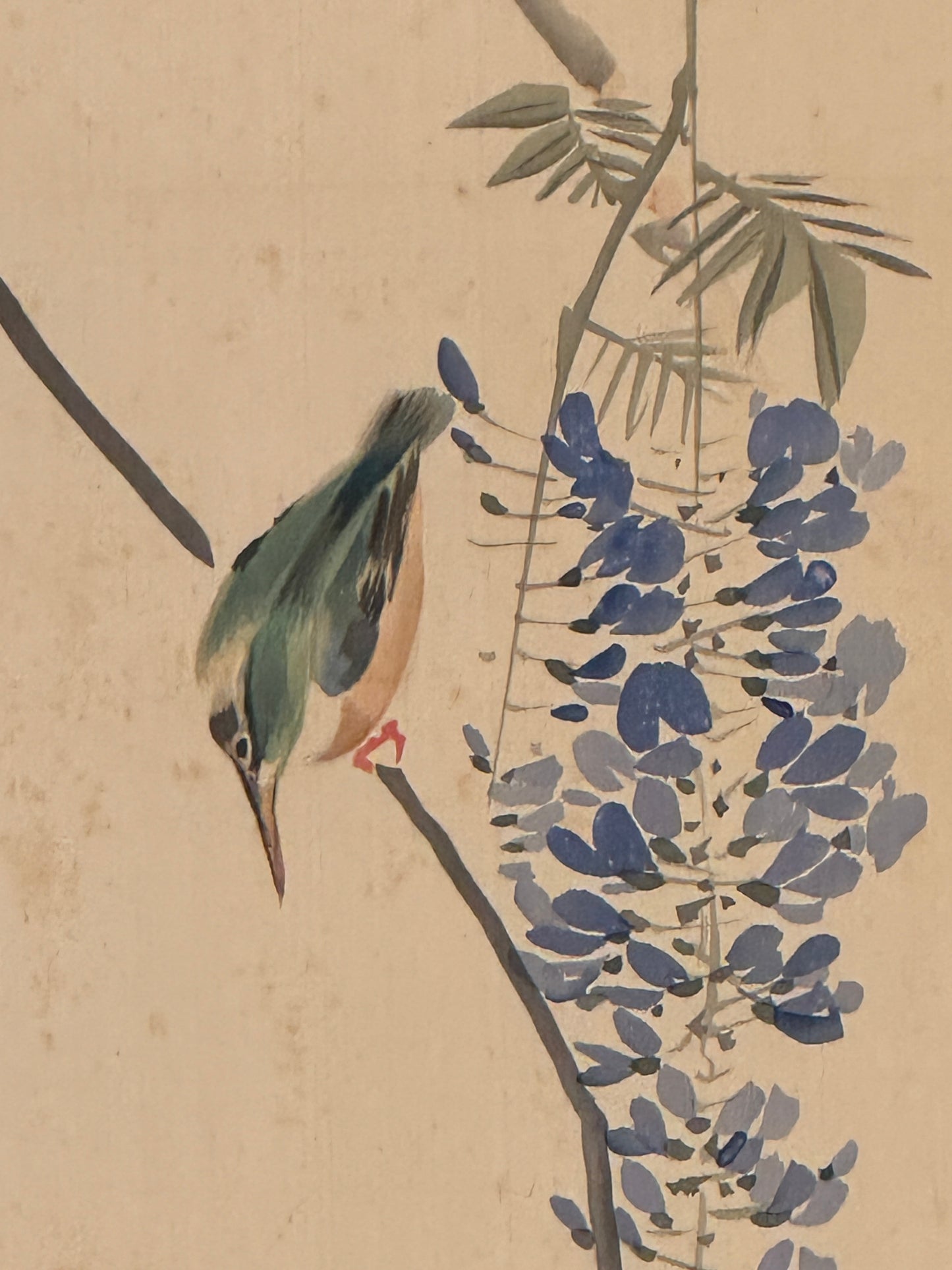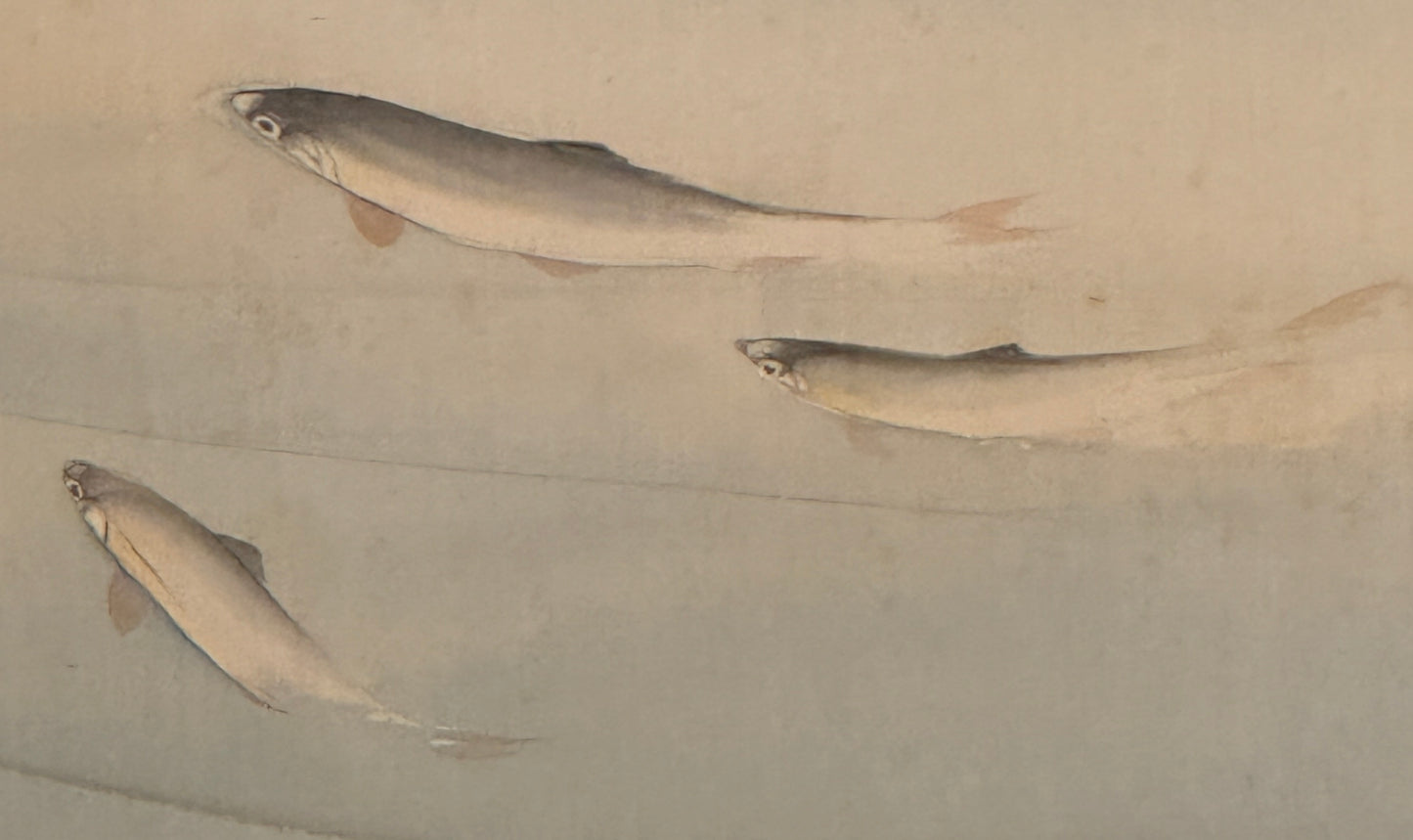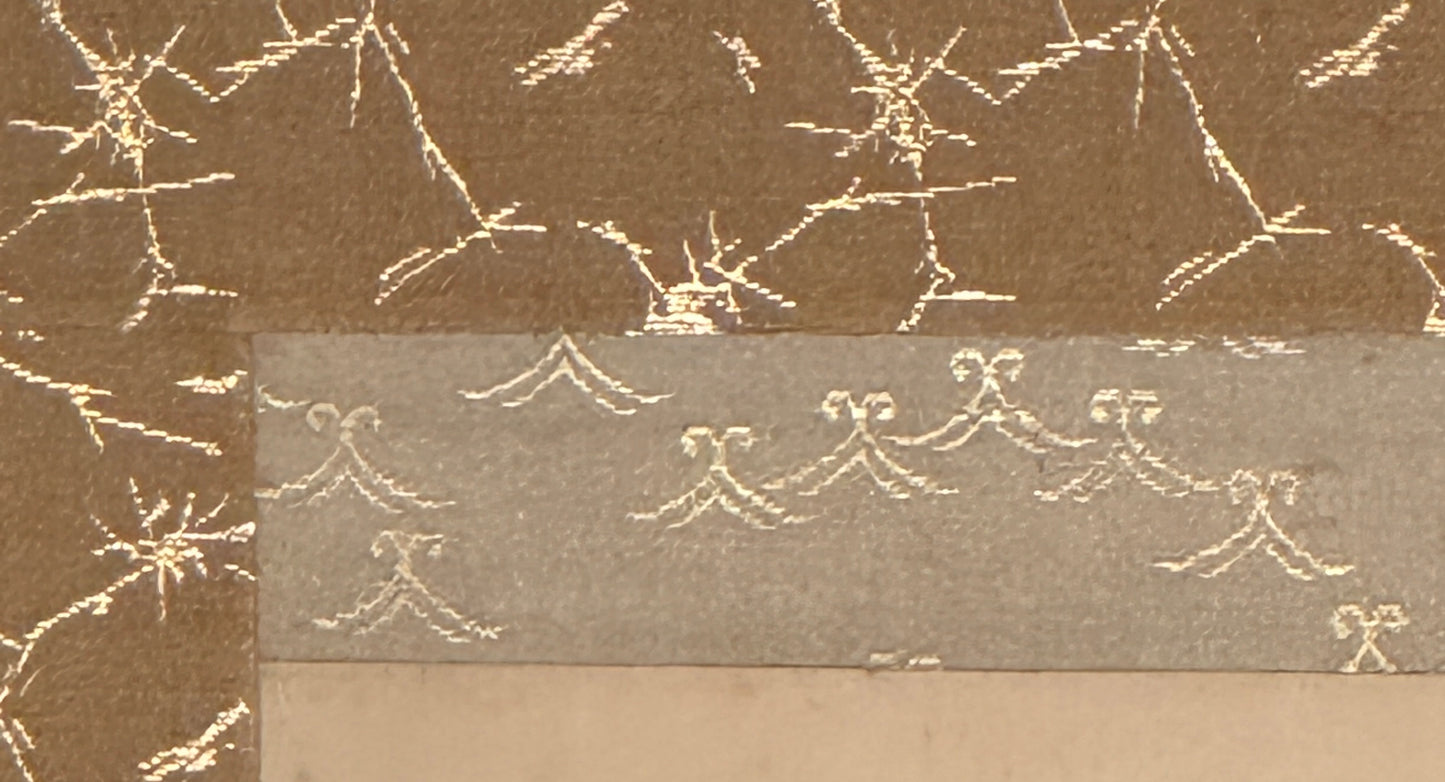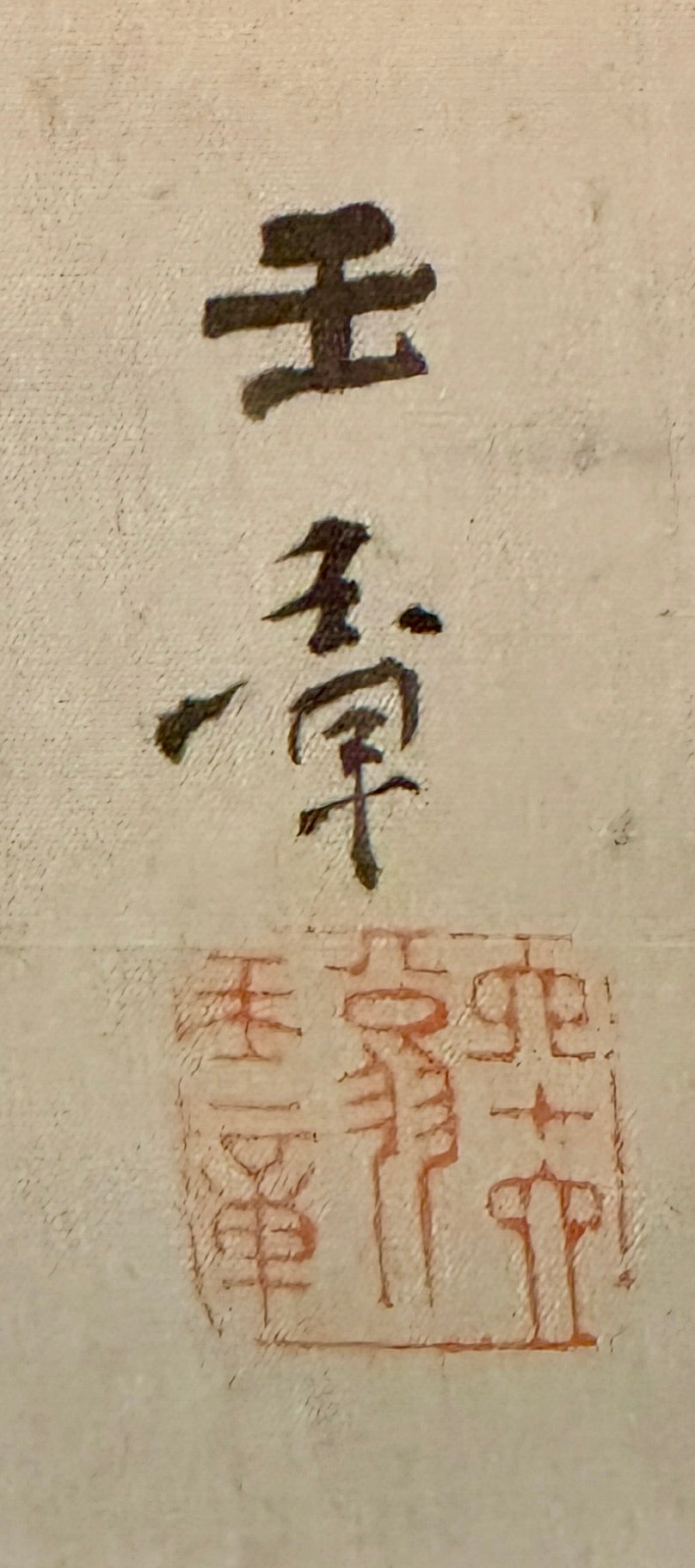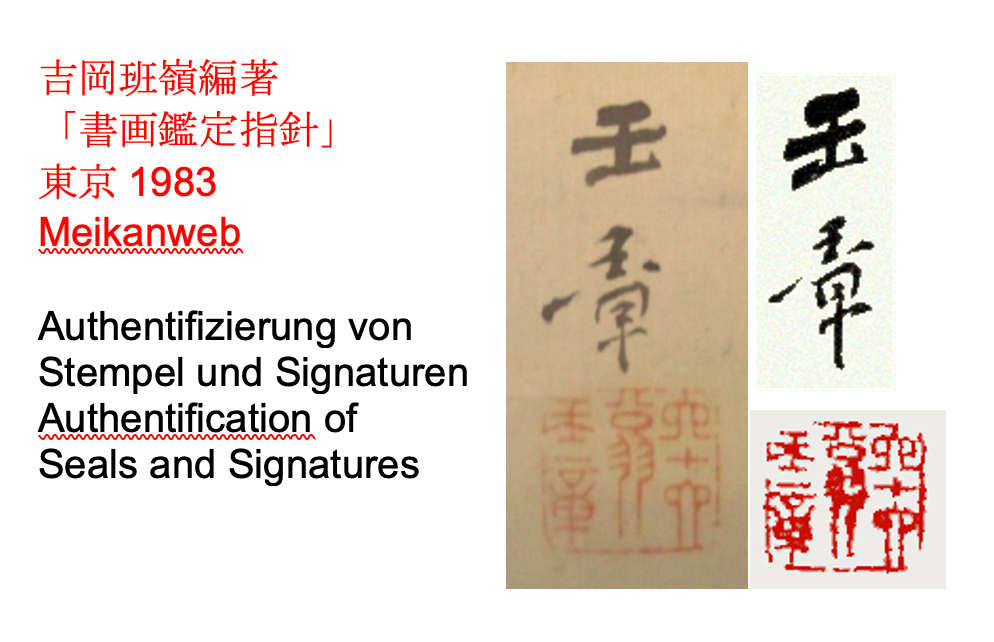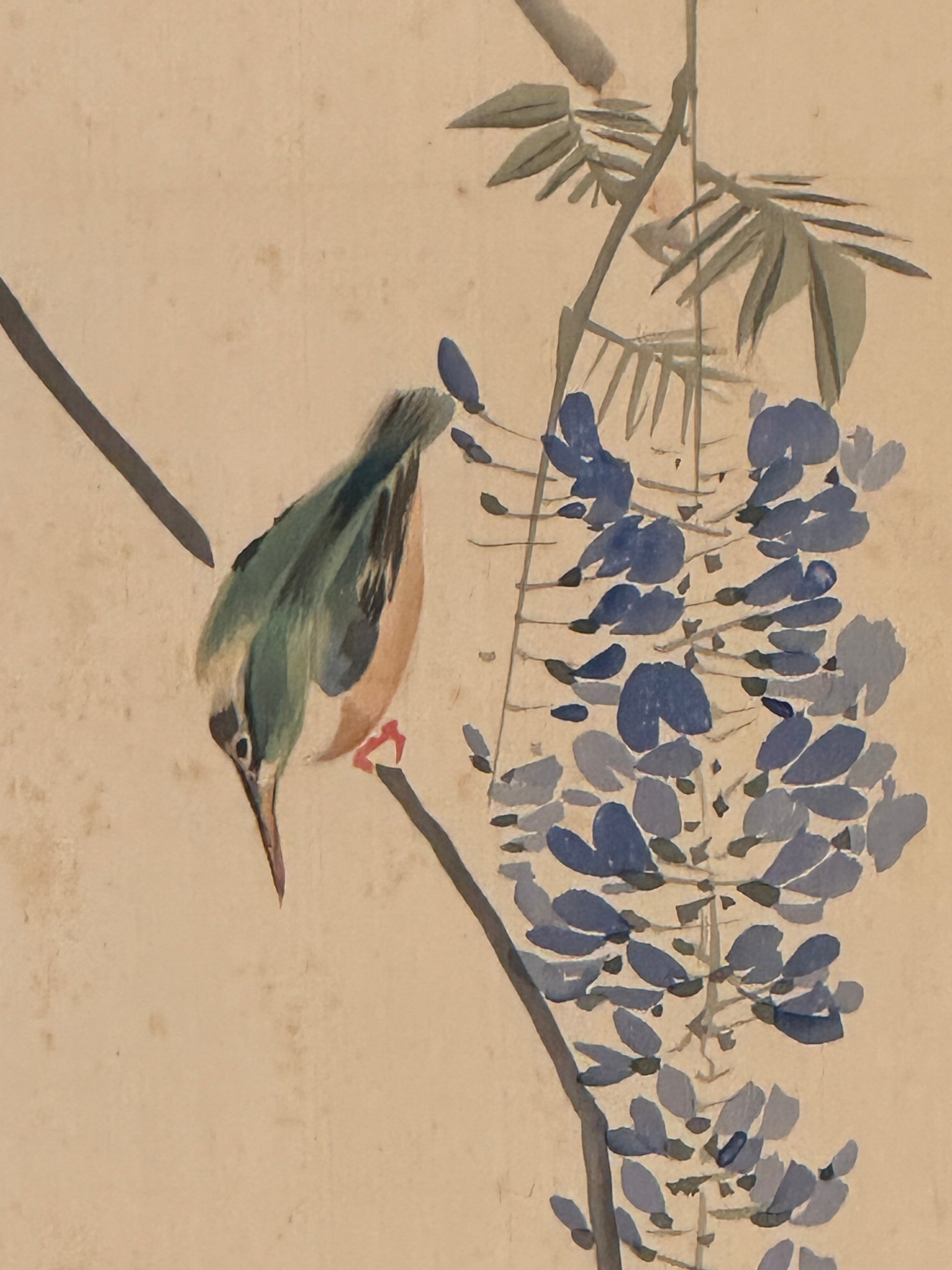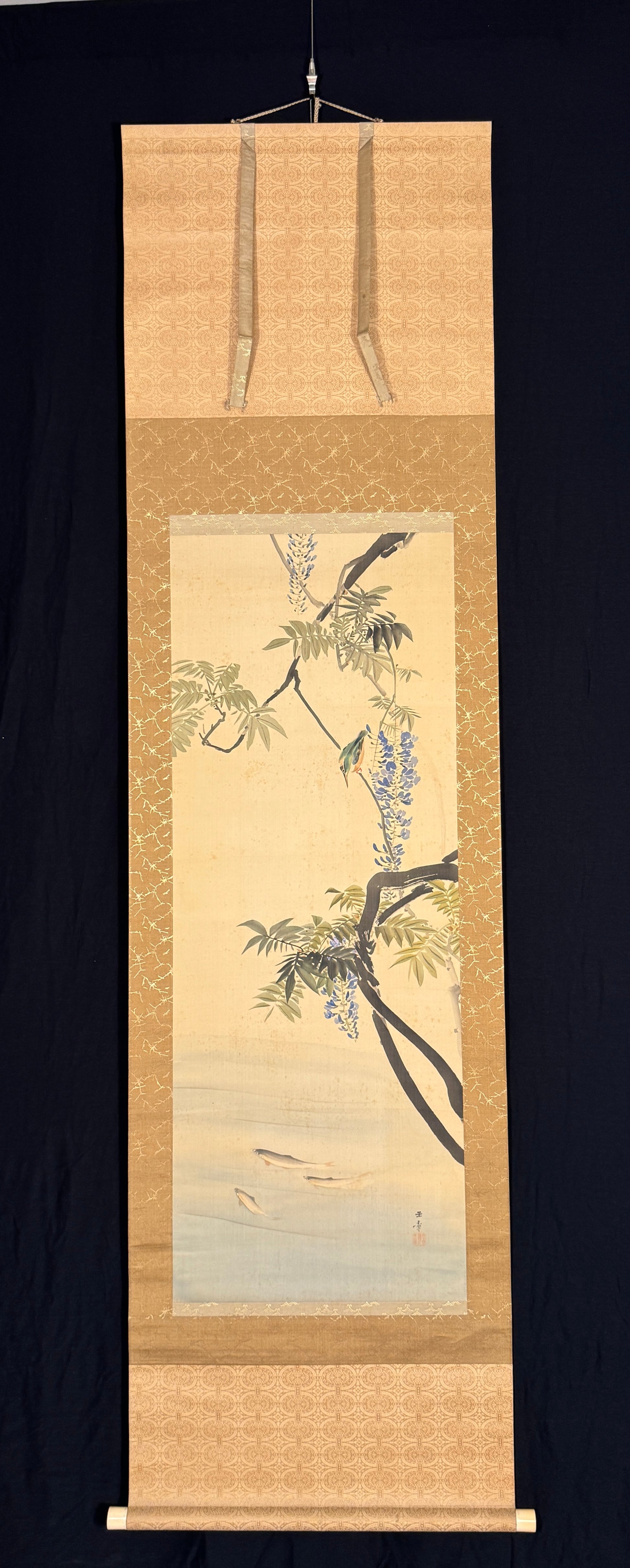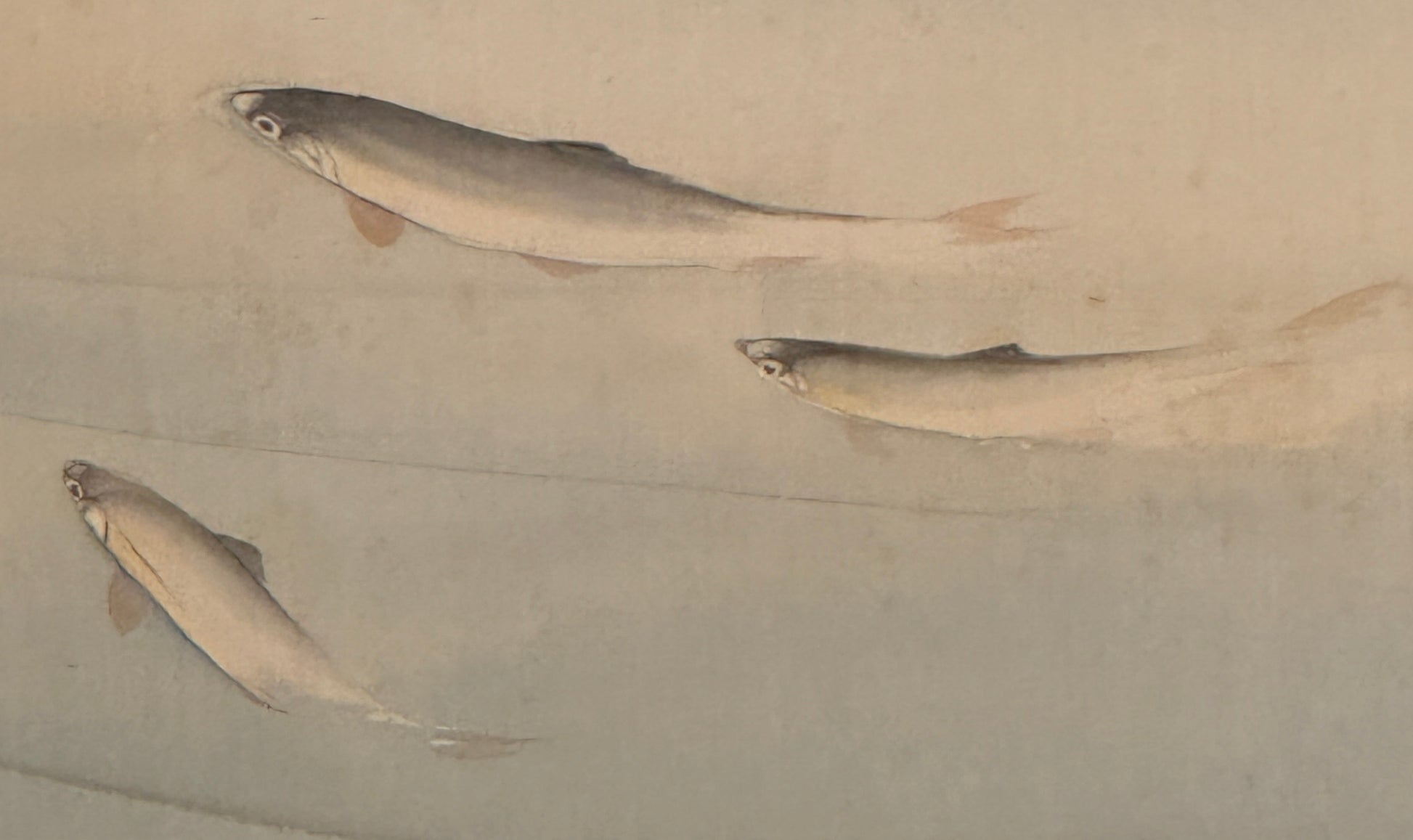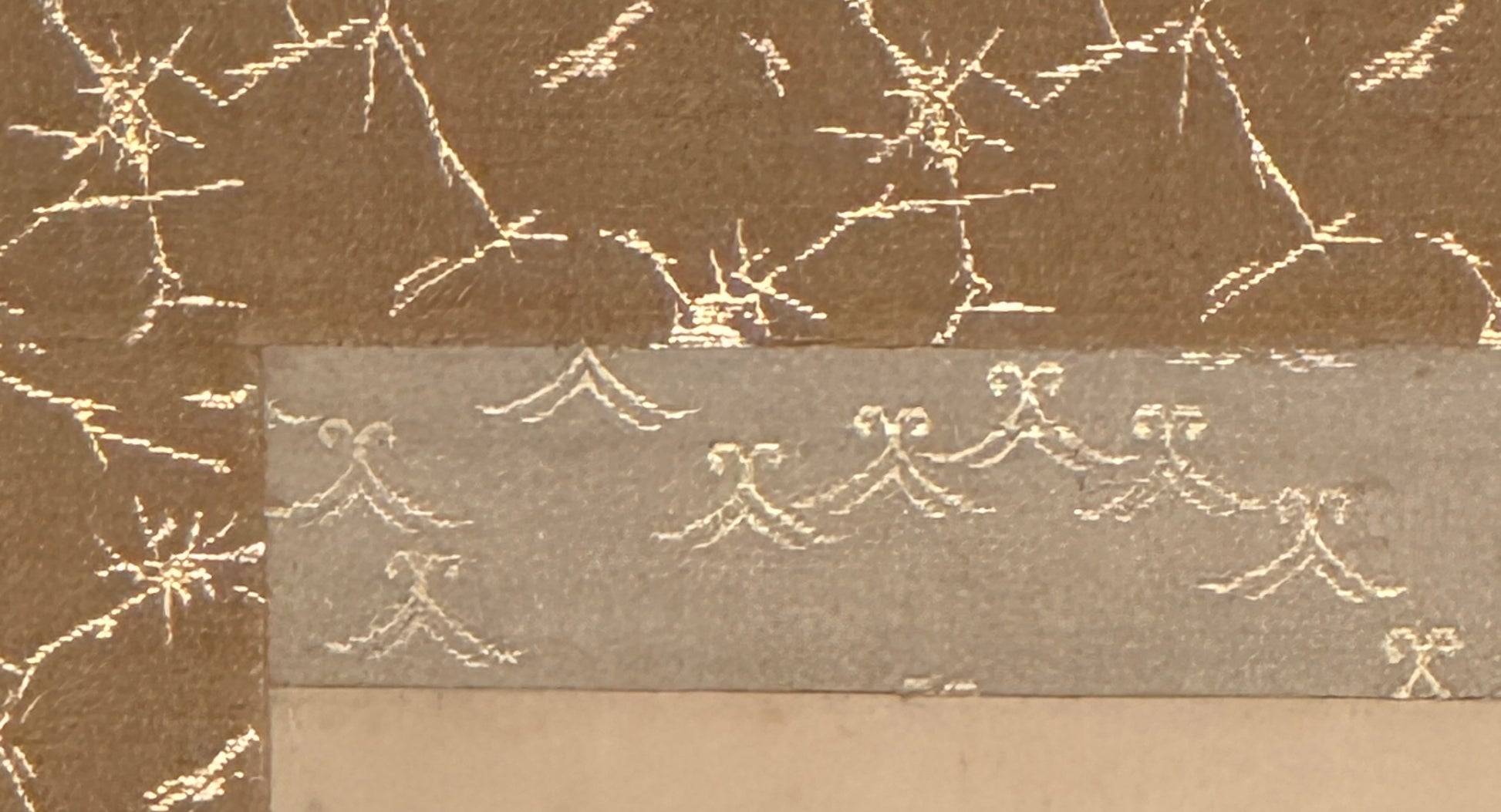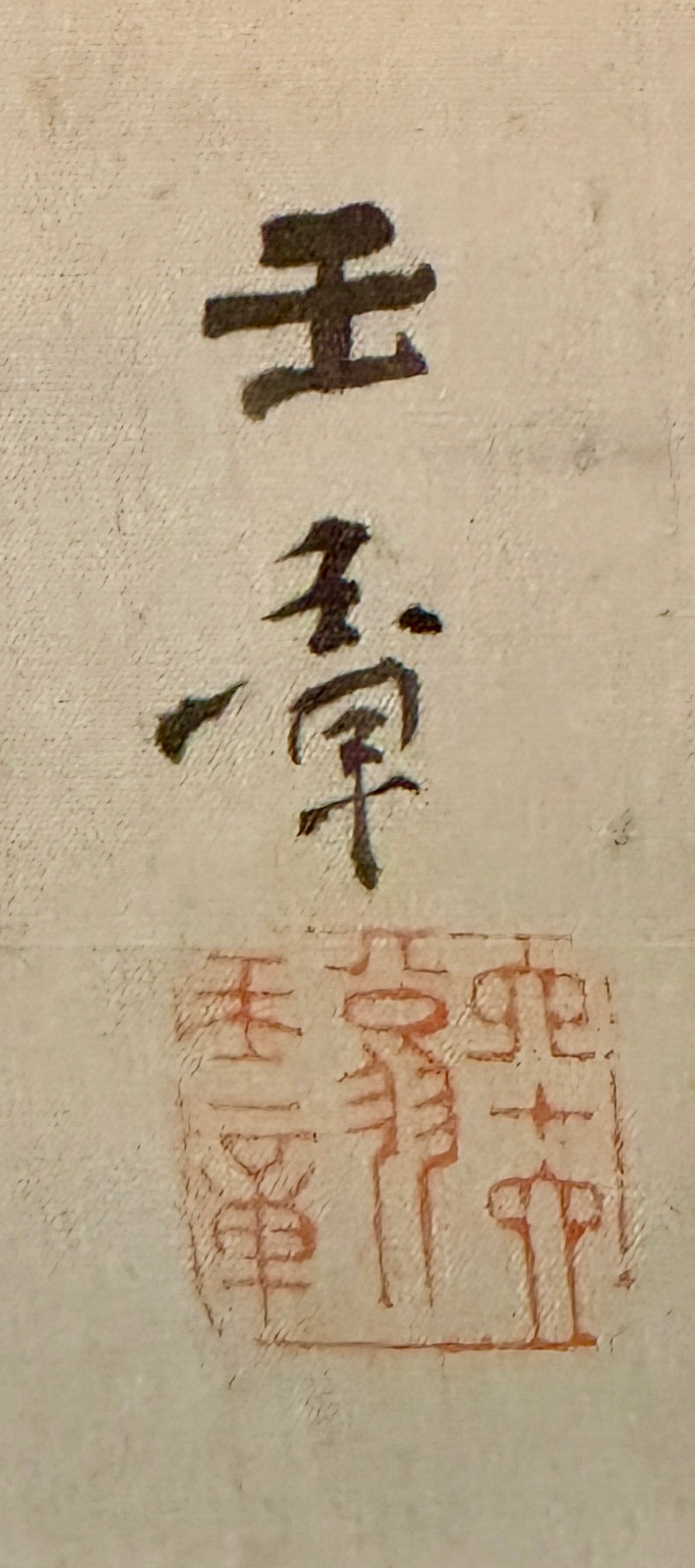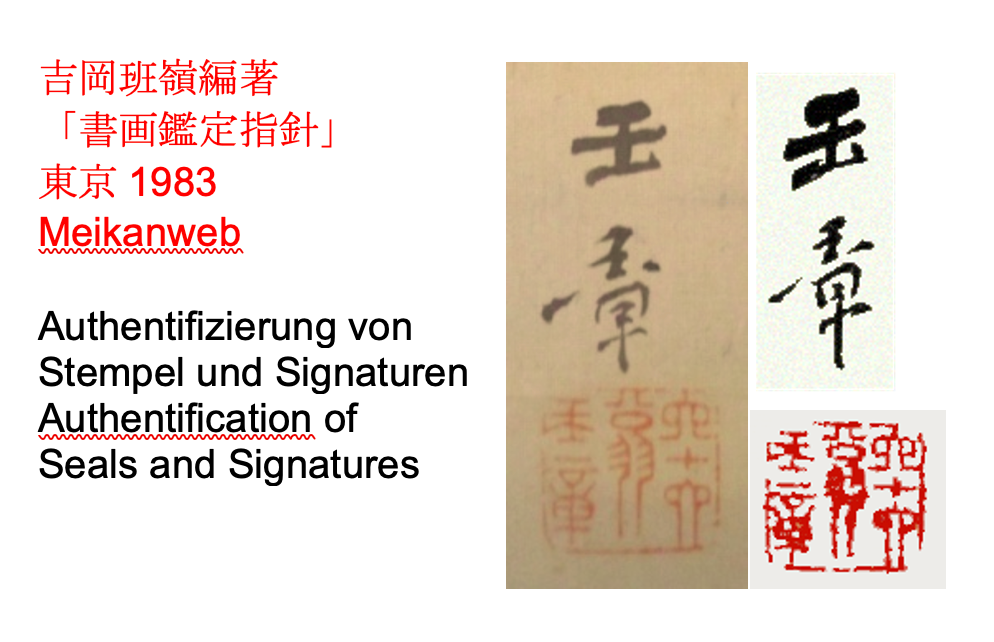Guignard Kyoto Collection
Wisteria, kingfisher, fish | Kawabata Gyokushō 川端玉章 | 1842-1913
Wisteria, kingfisher, fish | Kawabata Gyokushō 川端玉章 | 1842-1913
Couldn't load pickup availability
Gyokushō is considered to be one of the most important heirs of the Shijō school, the painting institution that set the tone in the art metropolis of Kyoto in the 19th century. He brought this Shijō art to Tokyo, where he became head of the painting department at the art school. Gyokushō has received many awards and his works have not only found their way into the National Museum in Tokyo, but also into the Asian art collections of the Metropolitan Museum in New York, the Museum of Fine Arts in Boston Massachusetts, and the Victoria and Albert Museum in London, etc.
The combination of kingfisher, wisteria and fish as equal motifs in one picture is unusual from the perspective of the Shijō school. But such innovations were needed to keep the spirit of the school alive in the 20th century. The tension between the bird and the fish was also important for the painter in this large format. The bird turns its head towards its prey in great concentration, and the fish swim slightly upwards - it looks as if the bottom fish, by turning upwards, senses the danger of the fish hunter. This tension between the bird and the fish is balanced by the nonchalance of the wisteria, which connects the two worlds with its tendrils. The painterly magic of its flower design is reminiscent of the ingenious wisteria screens of Maruyama Ōkyō (1733-1795), who was the artistic guiding force of the Shijō school.
